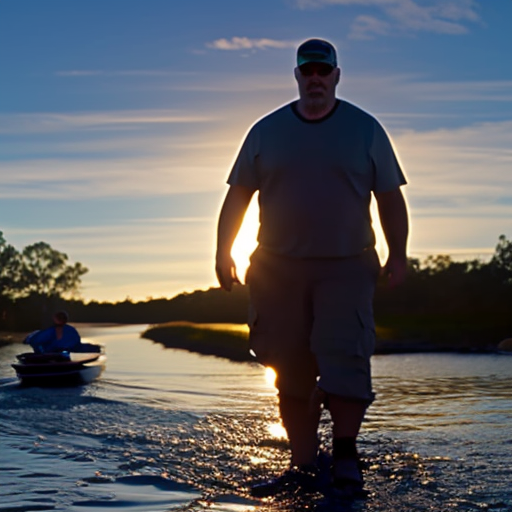
The Florida Department of Environmental Protection
The Florida Department of Environmental Protection (FDEP) serves as the leading agency in the state for environmental management and stewardship. Its primary goal is to protect and preserve Florida’s air, water, and land resources. FDEP envisions a future where strong community partnerships are established, Florida’s natural resources are safeguarded, and its ecosystems are enhanced.
Sustainable Development Goals (SDGs)
- Goal 6: Clean Water and Sanitation
- Goal 7: Affordable and Clean Energy
- Goal 11: Sustainable Cities and Communities
- Goal 13: Climate Action
- Goal 14: Life Below Water
- Goal 15: Life on Land
FDEP’s Role in Achieving the SDGs
FDEP plays a crucial role in contributing to the achievement of the Sustainable Development Goals (SDGs) outlined by the United Nations. By focusing on the following areas, FDEP actively works towards a sustainable future:
- Protecting and improving water quality to ensure clean water for all (Goal 6)
- Promoting the use of renewable energy sources and supporting energy efficiency initiatives (Goal 7)
- Implementing sustainable practices in urban planning and development (Goal 11)
- Addressing climate change impacts and reducing greenhouse gas emissions (Goal 13)
- Preserving and restoring marine ecosystems and biodiversity (Goal 14)
- Conserving and restoring terrestrial ecosystems, forests, and wildlife habitats (Goal 15)
Through its various programs, partnerships, and regulatory efforts, FDEP actively contributes to the global efforts of achieving the SDGs. By prioritizing environmental protection and sustainability, FDEP aims to create a better future for Florida and contribute to the overall well-being of the planet.
SDGs, Targets, and Indicators
1. SDGs Addressed or Connected to the Issues Highlighted in the Article:
- SDG 6: Clean Water and Sanitation
- SDG 13: Climate Action
- SDG 15: Life on Land
The article mentions that the Florida Department of Environmental Protection is responsible for protecting the state’s air, water, and land. This directly connects to SDG 6, which focuses on ensuring availability and sustainable management of water and sanitation for all. It also indirectly relates to SDG 13, as protecting the environment helps mitigate climate change impacts. Additionally, safeguarding natural resources and enhancing ecosystems aligns with SDG 15, which aims to protect, restore, and promote sustainable use of terrestrial ecosystems.
2. Specific Targets Based on the Article’s Content:
- Target 6.1: By 2030, achieve universal and equitable access to safe and affordable drinking water for all.
- Target 6.3: By 2030, improve water quality by reducing pollution, eliminating dumping, and minimizing release of hazardous chemicals and materials.
- Target 13.1: Strengthen resilience and adaptive capacity to climate-related hazards and natural disasters in all countries.
- Target 15.1: By 2020, ensure the conservation, restoration, and sustainable use of terrestrial and inland freshwater ecosystems and their services.
The article emphasizes the Florida Department of Environmental Protection’s role in protecting water resources, which aligns with Target 6.1 of SDG 6. It also mentions the agency’s efforts to safeguard natural resources and enhance ecosystems, which relate to Target 15.1 of SDG 15. While the article does not explicitly mention climate-related hazards, the agency’s focus on environmental management and stewardship indirectly supports Target 13.1 of SDG 13.
3. Indicators Mentioned or Implied in the Article:
- Indicator 6.1.1: Proportion of the population using safely managed drinking water services.
- Indicator 6.3.2: Proportion of bodies of water with good ambient water quality.
- Indicator 15.1.1: Forest area as a proportion of total land area.
The article does not explicitly mention indicators, but we can infer relevant indicators based on the targets identified. Indicator 6.1.1 measures the proportion of the population using safely managed drinking water services, which aligns with Target 6.1. Indicator 6.3.2 assesses the proportion of bodies of water with good ambient water quality, reflecting progress towards Target 6.3. Indicator 15.1.1 measures the forest area as a proportion of total land area, which indicates progress towards Target 15.1.
SDGs, Targets, and Indicators Table:
| SDGs | Targets | Indicators |
|---|---|---|
| SDG 6: Clean Water and Sanitation | Target 6.1: By 2030, achieve universal and equitable access to safe and affordable drinking water for all. | Indicator 6.1.1: Proportion of the population using safely managed drinking water services. |
| SDG 6: Clean Water and Sanitation | Target 6.3: By 2030, improve water quality by reducing pollution, eliminating dumping, and minimizing release of hazardous chemicals and materials. | Indicator 6.3.2: Proportion of bodies of water with good ambient water quality. |
| SDG 13: Climate Action | Target 13.1: Strengthen resilience and adaptive capacity to climate-related hazards and natural disasters in all countries. | No specific indicator mentioned in the article. |
| SDG 15: Life on Land | Target 15.1: By 2020, ensure the conservation, restoration, and sustainable use of terrestrial and inland freshwater ecosystems and their services. | Indicator 15.1.1: Forest area as a proportion of total land area. |
Copyright: Dive into this article, curated with care by SDG Investors Inc. Our advanced AI technology searches through vast amounts of data to spotlight how we are all moving forward with the Sustainable Development Goals. While we own the rights to this content, we invite you to share it to help spread knowledge and spark action on the SDGs.
Fuente: floridadep.gov

Join us, as fellow seekers of change, on a transformative journey at https://sdgtalks.ai/welcome, where you can become a member and actively contribute to shaping a brighter future.



